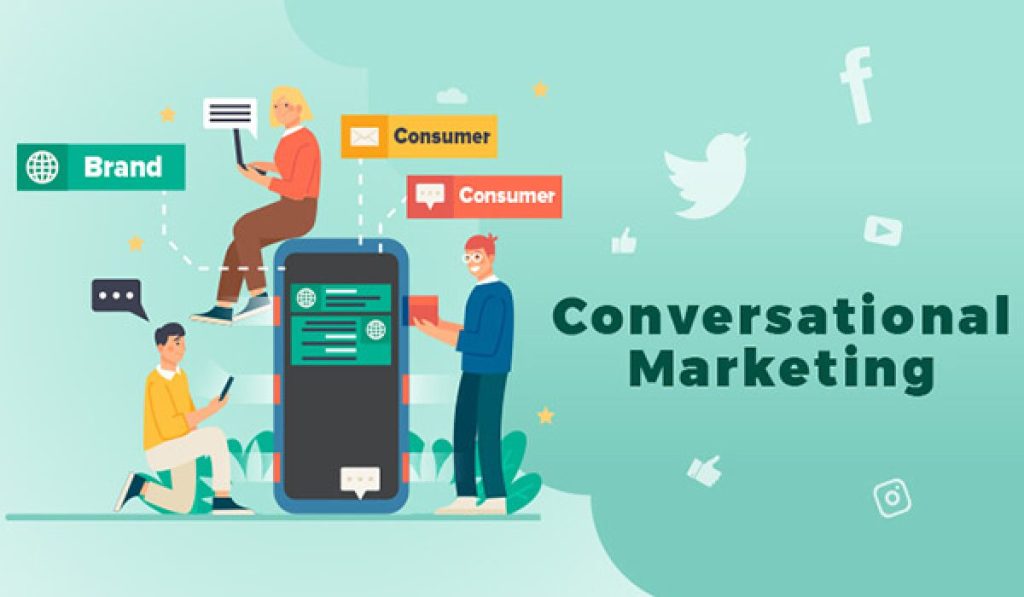How to Use Conversational Marketing to Boost Your Marketing Automation Strategy
Are you looking for a way to make your marketing automation strategy more effective and engaging? If so, you might want to consider adding conversational marketing to your mix.
What is Conversational Marketing?

Conversational marketing is a method of marketing that uses real-time, one-to-one conversations to connect with prospects and customers. Conversational marketing can take place on various platforms, such as chatbots, live chat, email, SMS, social media, and more. The goal of conversational marketing is to provide a personalized and humanized experience for your audience, and to build trust and loyalty with them.
What is Marketing Automation Strategy?
Marketing automation strategy is a plan that uses software and tools to automate repetitive and time-consuming tasks in your marketing process. Moreover, it can help you streamline your workflow, optimize your campaigns, and generate more leads and conversions. Furthermore, marketing automation strategy can also help you segment your audience, deliver relevant and timely messages, and measure your performance.
How are Conversational Marketing and Marketing Automation Strategy Related?
Conversational marketing and marketing automation strategy are not mutually exclusive. In fact, they can complement each other and enhance your overall marketing results. By combining conversational marketing and marketing automation strategy, you can:
- Create more personalized and engaging conversations with your prospects and customers
- Collect more data and feedback from your audience and use it to improve your campaigns
- Nurture your leads and customers throughout the customer journey and increase your retention and advocacy rates
- Save time and resources by automating the conversations that can be handled by bots and focusing on the ones that require human intervention
How Conversational Marketing Works Across the Customer Journey?
The customer journey is the process that your prospects and customers go through when they interact with your brand. It can be divided into different stages, such as:
- Awareness: The stage where your prospects discover your brand and become aware of your products or services
- Consideration: The stage where your prospects evaluate your products or services and compare them with other options
- Decision: The stage where your prospects decide to buy your products or services and become your customers
- Retention: The stage where your customers continue to use your products or services and become loyal to your brand
- Advocacy: The stage where your customers recommend your products or services to others and become your advocates
How to Identify Automation Trigger Points for Conversational Marketing?

Automation trigger points are the specific actions or events that initiate a conversation with your prospects or customers. Automation trigger points are important for creating personalized and timely conversations that match your audience’s needs and interests.
To identify automation trigger points for conversational marketing, you can follow these steps:
- Define your target audience and buyer personas. You need to know who you are talking to, what their goals, challenges, preferences, and behaviors are, and how they interact with your brand.
- Map out your customer journey and touchpoints. You need to know how your prospects and customers move through the different stages of the customer journey, and what are the key moments or interactions that influence their decisions.
- Analyze your data and feedback to find gaps and opportunities. You need to know what are the pain points, questions, objections, or motivations of your prospects and customers, and how you can address them or leverage them in your conversations.
- Choose the most relevant and effective conversational marketing tools or channels for each touchpoint. You need to know what are the best ways to communicate with your prospects and customers, and what are the advantages and limitations of each tool or channel.
- Set up the automation rules and workflows for each tool or channel. You need to know what are the conditions, actions, and outcomes of each conversation, and how to automate them using software and tools.
How to Measure and Improve Your Conversational Marketing Performance?
It is essential to track and analyze your conversational marketing performance and how it can help you improve your marketing automation strategy. By measuring your conversational marketing performance, you can:
- Evaluate the effectiveness and efficiency of your conversational marketing campaigns
- Identify the strengths and weaknesses of your conversational marketing campaigns
- Implement the necessary changes or improvements to your conversational marketing campaigns
Some key metrics or indicators to measure your conversational marketing performance are:
- Conversation rate: The percentage of visitors who start a conversation with your brand
- Engagement rate: The percentage of visitors who continue a conversation with your brand
- Lead generation rate: The percentage of visitors who provide their contact information or opt-in to your email list
- Conversion rate: The percentage of visitors who complete a desired action, such as making a purchase, signing up for a free trial, or downloading a guide
- Customer satisfaction rate: The percentage of customers who express their satisfaction with your products, services, or conversations
- Customer retention rate: The percentage of customers who continue to use your products or services and remain loyal to your brand
- Customer advocacy rate: The percentage of customers who recommend your products or services to others and become your advocates
How to improve conversational marketing performance?
- Define your goals and benchmarks for each metric, which are the targets and standards for your conversational marketing performance and results. They can help you clarify your aims and success measures.
- Use the appropriate tools or platforms to collect and visualize your data, which are the software and applications for your data and feedback. They can help you track and analyze your performance and results, and identify the trends and patterns.
- Identify the strengths and weaknesses of your campaigns, which you can do based on your data and feedback. You can also determine what works and what doesn’t for your audience and goals.
- Implement the necessary changes or improvements to your campaigns, which you can do based on your strengths and weaknesses. You can also optimize your performance and results.
- Repeat the process and compare the results, which can help you evaluate and improve your performance and results over time, and ensure your progress and goals.




